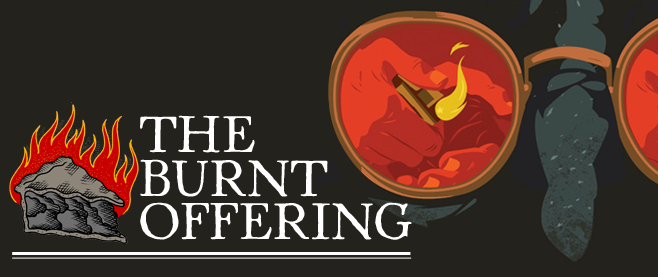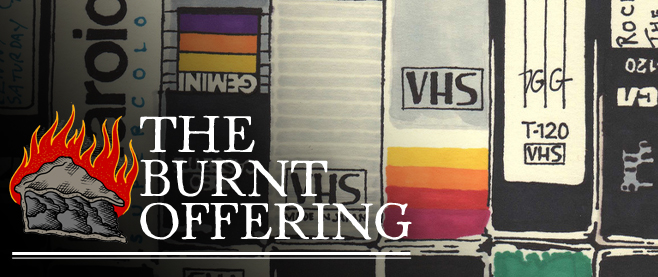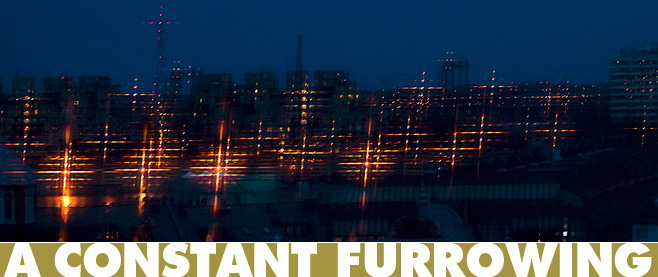
Invisible City
When I was a teenager in Cambridge, I wanted to buy a British book. What I ended up with was 253, written by an American called Geoff Ryman.
253 contains 253 vignettes about 252 passengers on the London tube train, most of whom are connected in some way (the 253rd person is the train’s driver). The book describes the moments before a train crash.
Before its publication in the late ’90s, 253 was a winding hypertext project located on the Web – this was back when hypertext was exciting, promising, not yet a boring way of citing sources. As a book, 253 was best read in short stints on the toilet: flipping around, making small connections, drawing your own conclusions.
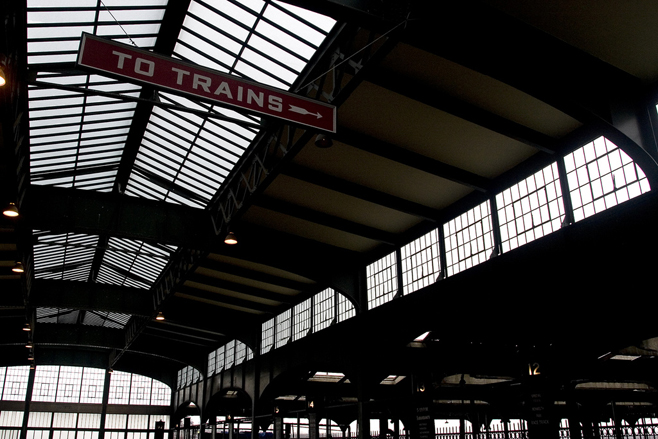
The city is a machine. (This is not a new idea.) The city is all gnashing metal teeth: it will draw you in, chew you up and spit you back out, if it wants. The city will make you invisible. You have to fight to live in the city, fight for your square of living space, jostle for room on the train. Sometimes you remember that when you are sitting in the dark, waiting for the soup on the stovetop to boil.
The deepest fear is disappearing. If you were to vanish – if you were to never go outside again, or if you were violently sucked into one of the dark gaps between the buildings, if you were to simply go missing – the city would never notice.
My chosen city, Chicago, is metal spires and plumes of smoke and dirt, and all drab, yellowing apartments, like mine, which is drearily cozy with papery-creased walls. A friend lately described it as “a comic book shop” with “too much to look at.”
I have lived in my apartment three years. In some ways my apartment is very much my own – most of the pictures are hung low, because I am short, and there are a lot of photographs of family – but I always remember that I am a tenant, too, an impermanent fixture that will someday, for some reason, have to find a new home for all these photographs, all these game cartridges, all these books.
The city is a neural network. We fear the city because we fear being lost forever.
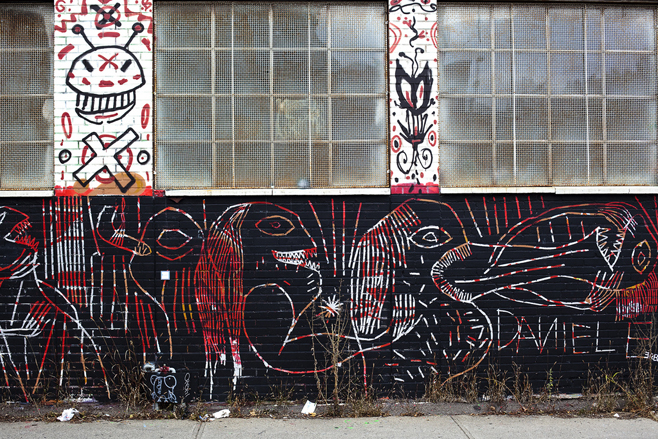
Recently I was reading the landlord’s latest revision of my building lease, which I am due to sign. He’d added a new condition: “no permanent modifications to the [apartment] units,” he’d written, directly on the page in ballpoint pen. I suddenly remembered living in a college dormitory, picking little green scabs of poster-tack away from the wall.
The Surrealists, working in the ’20s and ’30s, played a game called “embellishing the city,” inventing drastic changes to architectural landmarks. Tristan Tzara suggested that the Tour Saint-Jacques be “demolished” and “rebuilt in rubber.” Tzara also recommended the Eiffel Tower be left “as it is, but change its name to ‘The Glass of Milk’.”
We long to impress ourselves upon the city, to change it momentarily if in the minutest way. We might, for instance, search our bags for a ballpoint pen and quickly, quietly scribble something onto the dingy wall of a toilet stall. We leave our notes in the city’s unwashed margins, even though we know they’ll eventually be erased.
It isn’t necessary to look for esoteric reasons why inmates write on sanitorium walls or prison concrete. Their graffiti may be symbolic ways of getting out. On the opposite side of the coin is an interesting story of one graffitist who felt he belonged behind those restraining walls and was in fact trying to climb back inside them. There is a documented account of how the writer of one persistent message scrawled in almost every West Side subway station in New York, on stairway risers, the walls, and steel columns, was tracked down. SUPPORT MENTAL HEALTH, his graffito exhorted over and over again. He turned out to be a man who had been institutionalized for schizophrenia and released as cured. But, pathetically, he felt himself slipping, and riding the subways and scrawling through the night was his way of crying for help.
—Robert Reisner, Graffiti

In the 1940s the Letterists played another city game, this one called dérive. Literally “to drift,” the dérive is a rootless, rudderless adventure through an urban space: it is a game of embracing lostness. Its participants are flânerie.
We play the same type of dérive on Wikipedia at midnight. Even my mother has played this game on YouTube. The Internet is a place you wander, wander, wander, as you might wander through a city you do not yet know.
But the dérive is a dangerous game because, to play it, you must become “unstuck,” ungrounded in time and space and geography, liminal. “Drifting” is antithetical to survival: most of us do not like to become ungrounded. Unless we are preparing for a major life transition, we prefer to own houses, not rent. Nobody wants to permanently “drift.”
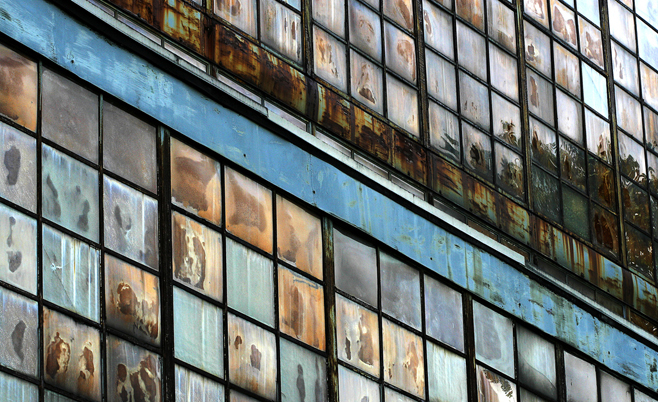
My apartment is cluttered with all this handsome claustrophobic weight that makes it hard for me to ever afford moving away: it’s almost like having roots in this city, except they aren’t roots at all, they’re anchors, whether arranged on shelves or crushed in still-packed boxes.
In any cubicle we set down certain landmarks to remind us of who we are: here, a photograph of our spouse; there, a snow-dome with the gold-lettered name of another city inside it.
In the movie Labyrinth Sarah is delighted to find her bedroom exactly as she left it. But as she soon discovers, it is only a simulation of her bedroom – it’s a single room, an island stranded in a liminal wasteland. It is only a facsimile of a safe space.
Like Sarah, we feel safest when we are surrounded by our own stuff. When essayist Malcolm Gladwell wrote about SUVs, he discovered that what makes us feel “safe,” of all things, is a cupholder:
If there is a car that has no cupholder, it is not safe. If I can put my coffee there, if I can have my food, if everything is round, if it’s soft, and if I’m high, then I feel safe. It’s amazing that intelligent, educated women will look at a car and the first thing they will look at is how many cupholders it has.
[…T]hat’s the puzzle of what has happened to the automobile world: feeling safe has become more important than actually being safe.

Blade Runner was assigned viewing in a class at Northwestern University called “Urban Mediations: Literature, Film, and the City.” (Because another movie on the syllabus was Metropolis, students affectionately referred to the course as “Cyborg Class.”) In Blade Runner‘s futuristic Los Angeles, the runaway androids feel alienated because, although they present as ordinary adult humans, they have no pasts. They have no real experience or history to ground their identities: they are only overgrown children, overwhelmed by terrible adult traumas.
Judith Kerman, in her essay “Technology and Politics in the Blade Runner Dystopia,” writes: “In a marvelous bit of technological self-reflection, several of the main characters in the film collect and treasure family photographs, including replicants Leon and Rachael, who use photos of friends or supposed family as talismans against their own lack of human connection.”
And although Kerman’s essay was published in 1991, we do the very same thing now, don’t we? We publish entire photographic histories on social networks, “proving” the digital versions of our identities. Life is no rudderless hypertext narrative drift; instead, we suppose, it ought to be a direct, linear march, and so we now refer to the illusory A-to-Z of our lives as a Facebook “timeline.”
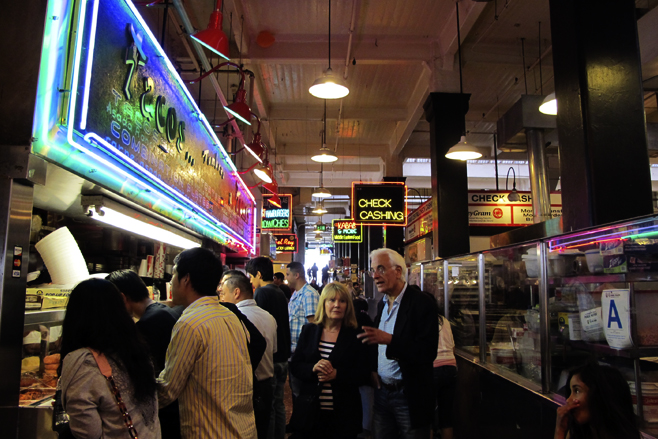
Three weeks ago I picked up an acquaintance in front of a taquería. She’d text-messaged everyone else, I learned later, but I was the only person who had answered her at that hour. When she got into my car and I asked where to drive her, she couldn’t tell me. We looked at each other and, nodding, I took her to my home.
Recently I have turned into my most ungenerous self. I’ve worked hard to work alone, to live alone, to afford it – I’ve fought the city for the very privilege – and having a second person has been troubling, and expensive.
When my houseguest told me the city is a cruel, unfeeling place, I told her I was offended. I reminded her I am right here. Then I cried and gave her a date by which to move out. Then she cried, too, terrified of becoming homeless.
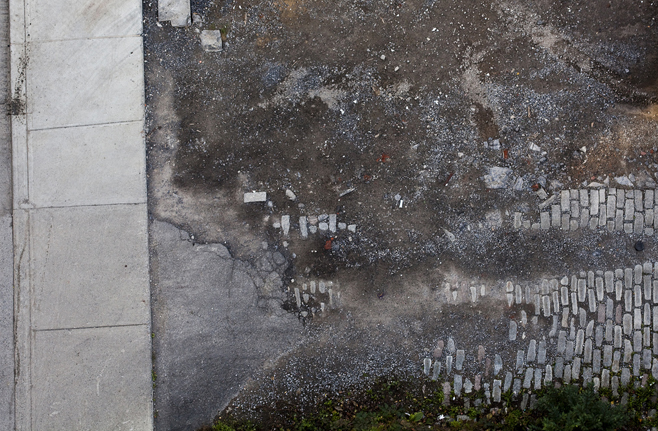
My apartment is haunted. Things shift around on their own. Food disappears or, sometimes, different food takes its place in the fridge. The back door to my patio is always open. The downstairs tenant has taped up a small sign asking someone to stop locking her out of the building. There is a ghost in this house.
I am beginning to feel like the ghost.
In 2008, in Brooklyn, I was mugged. The man had followed me into a glass vestibule. I couldn’t get away. He had a gun.
I said, “Sir, you’re in luck, because I just hit the ATM!” Good God, those could have been my very last words. I don’t know. When someone introduces himself with “Scream and I blow your fucking face off,” you call him “sir.”
I reached into my purse for my wallet, which panicked the man, and he grabbed onto my purse by its strap. Then we were both tugging on the same fabric stirrup, him probably thinking there must be something pretty great in there, for me to not let go of it at gunpoint. In the moment I was thinking about everything inside of my purse, and I decided I would rather have my face blown off than let go of it. So I didn’t let go.
Instead of killing me, the man grabbed my face – like palming a basketball – and cracked my head against the glass door. I let go of the purse, then, out of surprise.
The purse contained: bank cards, cash, my cell phone and ID, a bottle of Xanax pills, a USB drive. The bank cards were important to me because I don’t use a credit card. Then there was all that cash from having just visited the ATM. The cell phone contained the phone numbers of everyone I knew. The ID, I would need it to board the plane home. The Xanax, for flying on planes. The USB drive: photographs of friends.
It was 9 p.m. now, and I was officially stranded in New York. I called my cell phone from another cell phone. The person who answered offered it to sell it back to me for 500 dollars. I checked nearby garbage cans for my ID, but no dice.
The next day Afshin and Kaitlen took me in, long enough for me to get my identity put back together.
It is very important to have a home to go back to.
I am deeply, deeply ungracious. I don’t want anybody living with me. I feel like a terrible person.
———
———
I can’t remember whether I first saw ReBoot either before or after Toy Story, but I do remember being stunned that anyone would try to do an all-CG television show on a weekly basis. These days it isn’t so special, but in 1994 it was.
Like Toy Story, ReBoot was about things that come to life whenever people look away. ReBoot was set in a city called Mainframe, which was located inside an ordinary home computer. Philosophically ReBoot was less complicated than Ghost in the Shell or Neuromancer or even TRON – it began as a children’s show, after all – but it was nevertheless remarkable. After all, persistent Internet connections didn’t yet exist: the idea of “technology” as “city” was still mostly new.
———
“In cyberspace,” the author of 253 writes, “people become places.”
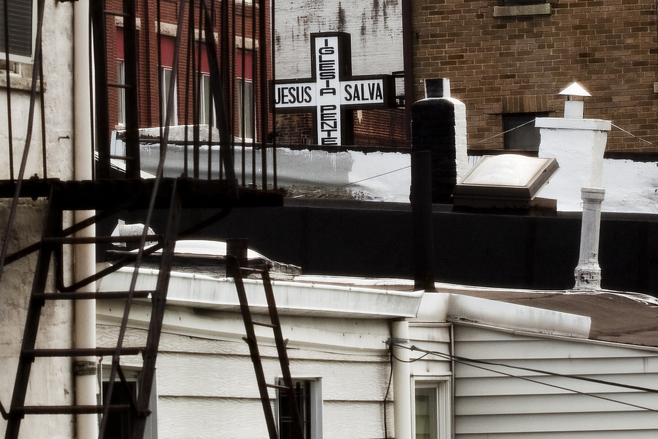
There is an invisible version of Chicago, I have slowly discovered, that is grafted right on top of the real one.
There are friends-of-friends, people right here in Chicago I have inexplicably never met, whom I talk to almost every day on Twitter. I have close Facebook friends I have met only once. There are people in Boston, New York, Los Angeles, England and Australia, who populate my invisible city.
Of course there were always these translucent threads connecting us; the Web makes some threads more apparent.
I might have never known my houseguest, except that she is a friend of some friends. We first met via email. That is how she has my phone number.
Yesterday was the calendar date I’d given my houseguest for moving out. “I’m going out of town,” I reminded her.
“I’ll get my things out of your car,” she replied, “and move them inside” – which, except for one last box, became mostly true.
Today I’m sitting at a small table in a motel in Colorado. Over the table there is a lamp on a jointed brass arm. There is a phone with a phone book underneath it, and if I were to flip through the phone book I wouldn’t recognize a single name.
A short distance from the table is a queen-size bed covered with a nightmarish paisley comforter, slightly rumpled on only one side. The room is completely white except for the floor and the ceiling, which are both made of brown wooden planks.
Next door is a young couple. They go outside with bare feet to smoke cigarettes. They both have long blond hair.
It’s almost perfectly still and quiet here, except for the familiar hum of a mini-fridge working over-hard, a television going in another room somewhere.
I packed only one small carry-on duffel, so there is almost nothing in the room that is mine. There is nothing in the room to remind me of anything.
My mother, who adopted me when I was 11 and is the only person who knows me perfectly, is gravely ill. She became ill while I was on the airplane. I’m very worried, but in a robotic, absent way. I have a lot of assignments; I’m supposed to sign this apartment lease.
My biggest fear is again becoming, at the ripe old age of 30, an orphan child.
I would like to stay here in this motel room forever, just typing and typing and doing not much else. It would be comfortable the way being marooned in Antarctica might be comfortable.
Sometimes – if you drift for too long – you begin to hope you will never be found.
———
Follow Jenn Frank on Twitter @Jennatar. Photos by Stu Horvath.




